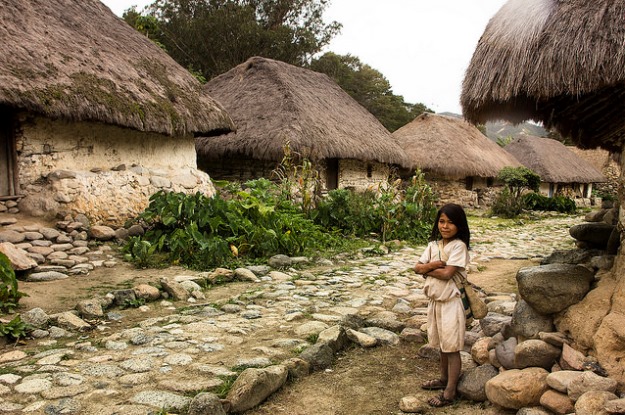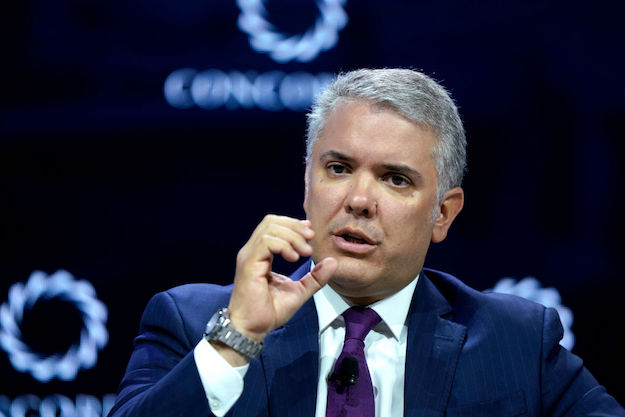While Colombia has made remarkable strides in reducing violence over the last two decades, the country remains a dangerous – and even deadly – place for environmental activists.
According to a report released June 20 by the advocacy group Global Witness, at least 26 land and environmental activists were killed in the country in 2015. That figure puts Colombia third in the world for these types of murders, and highlights the risks that some are willing to take in order to stop or slow the exploitation of the country’s abundant natural resources.
The potential for conflict between developers and Colombia’s indigenous and Afro-descendant communities is especially high. Nine of the 26 documented killings last year were of indigenous people, and many of these communities report the use of violence and intimidation against them as a direct result of their opposition to land development.
“Many of those killed in Colombia last year came from indigenous communities who face increasing encroachment by mining and agribusiness companies,” said Billy Kyte, a senior campaigner at Global Witness and co-author of the report, which found that resource extraction was the sector most often linked to killings of environmental activists worldwide in 2015.
Fortunately, recent steps to provide more clarity on indigenous and Afro-descendant territorial rights – as well as on the obligations that extractive industries have toward those communities – may provide some relief.
On June 9, Colombia’s constitutional court invalidated three 2012 resolutions from the Ministry of Mines and Energy and the National Mining Association that had demarcated over 20 percent of Colombia’s land as “strategic areas” for mining, opening the space up for concessions. The court’s decision found that the initial demarcation of the territories had violated local communities’ rights to prior consultation over development projects on their lands, and was part of a wider recent trend of Colombian courts either limiting mining activity or deferring authority over mining policies to municipalities, which have a more direct link to the communities in question.
The ruling could help diffuse some of the growing tension between indigenous communities and mining operators, according to Kyte. Many indigenous and Afro-descendant rights groups celebrated the ruling as a victory and an affirmation of the territorial rights they are guaranteed by Colombia’s constitution. But some feared that the ruling could lead to a backlash and more forceful intimidation efforts against their communities.
“The news has generated strong reactions from the government and mining companies, something that we believe could have consequences on security,” said Ximena González, an environmental lawyer and founding member of the Colombian NGO Tierra Digna, one of the civil society groups that filed the writ of judicial protection that prompted the court to take on the case. González told AQ that her group was “strategizing with other organizations on how to protect our organization, and especially to prevent and react to any possible attack on the ethnic communities affected.”
Identifying sources of potential danger may be a challenge. According to Colombia’s comptroller general, some 80 percent of mining operations in the country operate outside the law, posing a particularly menacing threat to the activists and ethnic groups alike.
Indeed, the prevalence of illegal mining operations was a reason for some formal mining companies’ objection to the June 9 ruling. Industry executives told the Colombian news website La Silla Vacía that the policy changes would make it harder for law-abiding mining companies to operate, while illegal mining would continue unaffected.
Colombia’s history of conflict, and its ongoing peace process, may also muddy the waters.
“The restitution of land stolen during Colombia’s internal conflict has brought returning communities into conflict with armed groups who seized their land illegally during the war years,” said Kyte.
All this suggests that the court ruling will be far from a silver bullet, and that indigenous and Afro-descendant groups and environmental activists alike will continue to be at risk.
Fernando Salazar Calvo was a member of the Embera Chamí group and one of at least nine indigenous land activists killed in Colombia in 2015. Fourteen months after Salazar was shot outside his home, Hector Jaime Vinasco, a former governor of the Cañamomo Lomaprieta Indigenous Reserve where Salazar worked, told AQ that authorities had made little progress in investigating the murder.
“To this day we don’t know where the bullet came that killed him, or who paid to have him killed,” said Vinasco, whose continued advocacy work on behalf of the Embera Chamí may help ensure that Colombia’s march toward peace includes communities like his own.
—
O’Boyle is an editor for AQ









